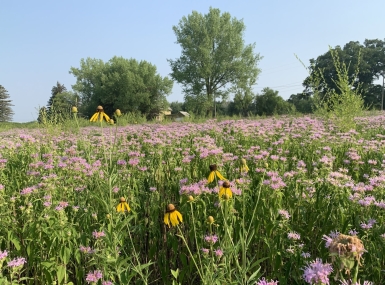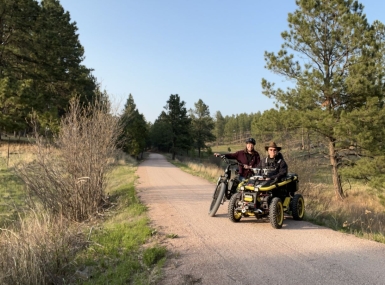U.S. Army Corps of Engineers publishes memo on protection of non-jurisdictional waters and wetlands
Author

Sarah Gimont

Charlotte Mitchell
Upcoming Events
Related News

Key Takeaways
On March 22, the U.S. Army Corps of Engineers (Corps) released a memo outlining how the Corps will protect non-jurisdictional waters using civil works and regulatory authorities following the Sackett decision, which significantly limited the scope of waters considered to be waters of the United States (WOTUS) under the Clean Water Act (CWA).
Remember:
- January 2023: The Corps and the U.S. Environmental Protection Agency (EPA) release a new definition of WOTUS that relies on both the “relatively permanent” and “significant nexus” tests.
- May 2023: The U.S. Supreme Court issues a decision in Sackett v. EPA which rejects the “significant nexus” tests and finds that CWA jurisdiction extends to “only those relatively permanent, standing or continuously flowing bodies of water ‘forming geographic[al] features’” such as streams, oceans, rivers and lakes.
- September 2023: The Corps and EPA release a conforming rule to amend the January 2023 definition of WOTUS to reflect the Sackett decision.
Civil works and regulatory program actions outlined in the memo:
The memo directs the Corps to use various civil works and regulatory program action to protect waters and wetlands no longer covered under WOTUS. The examples detailed in the memo are:
Civil works actions
- Increasing support for ecosystem restoration projects, including those under Section 206 of the Continuing Authorities Program (CAP)
- Offering technical assistance to communities and states for watershed and restoration planning through programs such as the Floodplain Management Services Program, the Planning Assistance to States Program and Tribal Partnership Program
- Promoting the use of nature-based solutions in civil works project planning, design and construction activities
Regulatory program actions:
- Continuing to ensure transparency in issuing approved jurisdictional determinations
- Continuing to follow the 2008 Mitigation Rule which allows the Corps to approve the use of non-jurisdictional aquatic resources to serve as compensatory mitigation for Corps permits
Reporting requirements outlined in the memo:
The memo directs the Corps to report compliance and progress within specified periods from the date the memo was issued and to provide a comprehensive update on the implications of the Sackett decision and actions taken under the direction of this memo. The deadlines listed in the memo that the Corps must meet are:
- May 21, 2024: Brief the Assistant Secretary for Civil Works on the implications of a policy directive that would require Civil Works recommended studies to avoid the creation of non-jurisdictional waters and wetlands through constructed project features.
- July 20, 2024: Report compliance status across Corps districts with 2008 Mitigation Rule that gives the Corps authority to approve the use of non-jurisdictional aquatic resources to provide compensatory mitigation.
- July 22, 2024: Identify projects for potential implementation under the Continuing Authorities Program (CAP) 206 authority which allows the Corps to design, plan and build projects to restore aquatic ecosystems for fish and wildlife.
- September 22, 2024: Identify opportunities to provide technical assistance consistent with the memo.
- March 22, 2025: Provide a comprehensive update on the implications of the Sackett decision and actions taken under the directives in the memo.
How will this memo affect counties?
Counties should expect the Corps to use the authorities in the memo to protect waters and wetlands that now fall outside the scope of WOTUS.
While this memo and others on approved jurisdictional determinations do provide a window into how Corps is implementing WOTUS following the Sackett decision, uncertainty remains.
Additional resources
For additional information about the Conforming Rule and Sackett decision, please see the resources below.
Resource
The Conforming Rule: The Waters of the United States

Advocacy
U.S. Supreme Court issues decisions in cases impacting property tax forfeiture laws and definition of Waters of the United States (WOTUS)
U.S. Supreme Court issues decisions in two cases with implications for counties

Related News

U.S. Department of Energy announces $18 million for Local Government Energy Program
U.S. Department of Energy announces $18 million for Local Government Energy Program

Sherburne County and tribal nations collaborate on county park
Sherburne County, Minn. engaged tribal nations to revise its plans for a park that included a Native American burial ground.

County offers off-road wheelchairs for visitors with disability, mobility issues
El Paso County, Colo.’s Trailability Program offers off-road wheelchairs for county park visitors with disabilities and mobility issues, increasing access to nature and reinvigorating residents’ love for the outdoors.